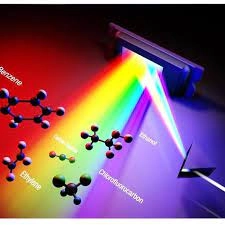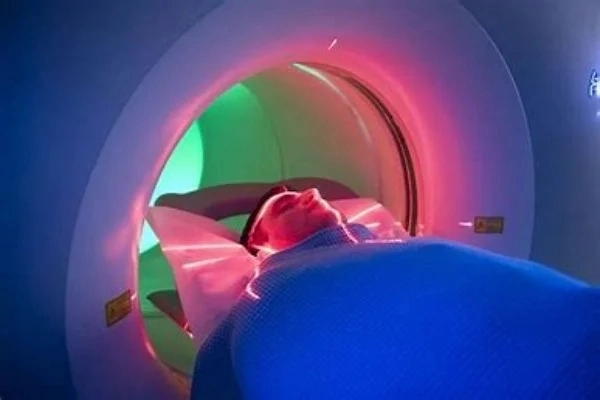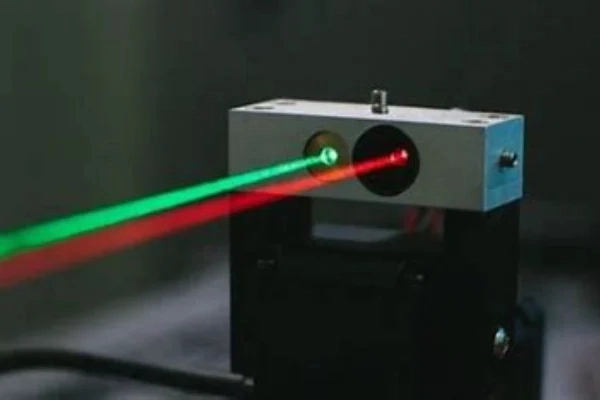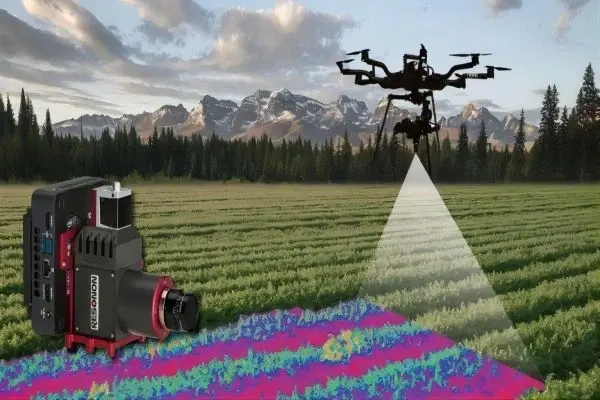Introduction
In the expansive domain of optics, few components are as vital as crystals. When we think of optical sensing and measurement, it’s nearly impossible to sideline the role that crystals play. Historically, these structured, often translucent entities have captured the imagination of scientists and researchers. Yet, beyond their alluring facade, lies the crux of their importance: the ability to manipulate light in ways that few materials can.

The fascinating journey of light, when it passes through crystals, is nothing short of remarkable. Owing to their unique structural arrangements at a molecular level, crystals can refract, diffract, and even polarize light. This isn’t merely a spectacle for the eyes; it’s a property that has immense scientific and practical implications. Imagine the intricacy of spectroscopic studies, where light interaction with matter reveals information about the substance under observation. In such studies, crystals often act as the bridge, guiding light with precision, ensuring that the resultant spectral data is clear and decipherable.
Moreover, the world of biomedicine has been revolutionized by the applications of crystals. From detecting minute traces of pathogens in samples to imaging the innermost recesses of biological systems, crystals have proved to be the unsung heroes. Their capacity to bend light or even produce light under specific conditions makes them invaluable tools in medical diagnostics and treatments.
Beyond these applications, crystals’ flexibility in handling light paves the way for further technological advancements. Whether it’s the development of high-end microscopes or enhancing the capabilities of lasers, the underlying principle often revolves around the unique optical properties of crystals.
In the subsequent sections of this discourse, our journey will navigate through the myriad ways crystals shape the world of optical sensing and measurement. We shall not only explore their functional attributes but also celebrate their contribution to pushing the boundaries of what’s possible in optical science and technology.
Unveiling the Spectrum: Spectroscopy

Diving deep into the realm of optics and molecular science, we encounter spectroscopy, a powerful technique that has transformed our understanding of matter and its countless interactions with light. Spectroscopy isn’t merely an observational tool; it’s a window into the intricate dance of photons and atoms. The critical feature underpinning its immense capabilities? Crystal technology.
Crystal Detectors in Spectroscopy
When one envisions a spectroscopic apparatus, the sophisticated interplay of lenses, lasers, and mirrors might come to mind. However, at the very heart of these systems are the unsung heroes: crystal detectors. With their lattice structures and unique molecular orientations, these detectors have the intrinsic capability to intercept and modulate light, channeling it in specific ways that are pivotal for spectroscopic analyses.
Different crystals, due to their unique compositions, can be attuned to distinct wavelengths, thereby enhancing the system’s sensitivity. It is this precision, offered by various crystal structures, that empowers spectroscopic methodologies to achieve unparalleled degrees of accuracy. From studying distant stars to understanding the molecular make-up of a novel substance, crystal detectors in spectroscopy have significantly augmented our analytical prowess.
Bridging Dimensions: Biomedicine

In the grand tapestry of scientific advancements, few intersections have been as promising and revolutionary as that of biomedicine and crystal technology. Biomedicine, in its essence, seeks to decode the mysteries of life, health, and disease at the cellular and molecular level. By integrating crystal technology into this field, a fresh horizon of diagnostic and therapeutic possibilities has been unlocked, marking a new epoch in medical science.
Crystals in Optical Imaging
Modern biomedicine places a strong emphasis on early detection and precision treatment. At the forefront of this initiative is optical imaging, a technique that visualizes the internal landscapes of biological systems. By introducing crystals into optical imaging systems, the game has been unequivocally changed. Crystals, with their inherent ability to focus, refract, and enhance light, significantly amplify the clarity and sharpness of images. This isn’t a mere aesthetic enhancement; it translates to detecting anomalies at earlier stages, identifying pathologies with greater confidence, and administering therapies that are sharply targeted. Such advancements, powered by crystals, hold the promise of ushering in an era where diseases can be intercepted at their nascent stages, leading to better outcomes and improved quality of life.
Crystal Clear: Optical Measurement
In the vast expanse of optical science, there is a chapter dedicated exclusively to the marvels of crystals and their myriad applications. Among the significant advancements driven by crystals, their role in optical measurement stands out distinctly.

Optical measurement, as the term suggests, revolves around the quantitative and qualitative assessment of light and its interactions. Be it determining the intensity of a light wave, its wavelength, or even the angle at which it refracts, the emphasis is on precision. Enter crystals, nature’s very own prisms that can modulate, bend, and transmit light with an elegance and accuracy unparalleled by most other materials. Their innate structural geometry, coupled with their transparent nature, forms the foundation for many optical measurement techniques.
Crystals in Interferometry
Delving deeper into the world of optical measurements, one encounters interferometry, a nuanced technique that has revolutionized fields ranging from astronomy to bio-medicine. At its core, interferometry deals with the superimposition of light waves to glean information about distances, surface profiles, and refractive indices.
The role of crystals in this domain is nothing short of transformational. Given their ability to split, reflect, and recombine light beams, crystals serve as the backbone of many interferometric systems. Their meticulous alignment and unique optical characteristics amplify the coherence and phase difference between light beams, ensuring that the resultant interference patterns are clear and decipherable. This clarity, driven by crystals, translates into measurements that are marked by their precision and reliability.
The Kaleidoscope: Diverse Crystal Applications
Crystals, with their scintillating beauty and profound optical properties, aren’t just confined to laboratories or academic discussions. Their applications paint a vibrant kaleidoscope, touching a multitude of sectors and industries. While they continue to be stalwarts in fields like communication and medicine, their influence permeates unconventional domains such as environmental monitoring, homeland security, and even industrial quality assurance.
Crystals in Environmental Monitoring
As global communities grapple with the challenges of pollution and environmental degradation, the quest for innovative solutions has never been more urgent. Crystals, in this context, emerge as potent allies. When integrated into environmental monitoring systems, they significantly bolster the detection range and sensitivity.

Whether it’s monitoring greenhouse gases, tracing minute particulates in the air, or even assessing water quality, crystals play a pivotal role. Their capacity to interact with specific wavelengths of light allows for the identification and measurement of various pollutants with a high degree of specificity. As the world strides towards a sustainable future, the synergy between crystals and environmental monitoring promises a clearer path, one that is underpinned by data, precision, and timely interventions.
Conclusion
Tracing the trajectory of crystals in optical sensing and measurement, one can’t help but marvel at the interplay of science, innovation, and application. From mere theoretical constructs in ancient texts to tangible tools in state-of-the-art labs, crystals have cemented their place in the pantheon of scientific advancements. Their inherent properties, when married to light, have opened doors previously deemed unreachable. Every twist, turn, and refraction within these crystalline structures speaks volumes about their potential.
As our understanding deepens and technology advances, the scope of crystal applications in optical domains widens further. Today, from medical diagnostics to environmental monitoring, the crystal’s influence is palpable. In retrospect, the story of crystals is more than just about their scientific significance; it’s a testament to human ingenuity and our relentless pursuit of understanding the world around us. As we stand on the cusp of future discoveries, one thing remains certain: the bond between light and crystal will keep illuminating new frontiers in optical sensing and measurement.
FAQs
- How do crystals enhance the accuracy of spectroscopic systems?
- The intrinsic properties of crystals facilitate precise modulation of light, thus enhancing the accuracy and sensitivity of spectroscopic systems.
- What role do crystals play in optical imaging within the biomedical domain?
- Crystals enhance the clarity and precision of optical images, aiding in early diagnosis and targeted therapies in the biomedical domain.
- How are crystals employed in optical measurement techniques like interferometry?
- Crystals, with their meticulous alignment and optical characteristics, enhance the accuracy of interferometric measurements, pivotal in optical measurement techniques.
- In what way do crystals contribute to environmental monitoring?
- The deployment of crystals in environmental monitoring systems elevates the ability to detect and measure pollutants accurately, thus aiding in sustainability efforts.
- What makes crystals indispensable in optical sensing and measurement applications?
- The unique ability of crystals to modulate and transmit light with precision makes them indispensable in a myriad of optical sensing and measurement applications.

Frank
Frank graduated from the University of Shanghai for Science and Technology, majoring in optics. As a technical engineer at Crylink Company, he deeply understands crystal materials and laser components.
Related Video(s) with this Article
Related Product(s) with this Article
Related Application(s) with this Article
